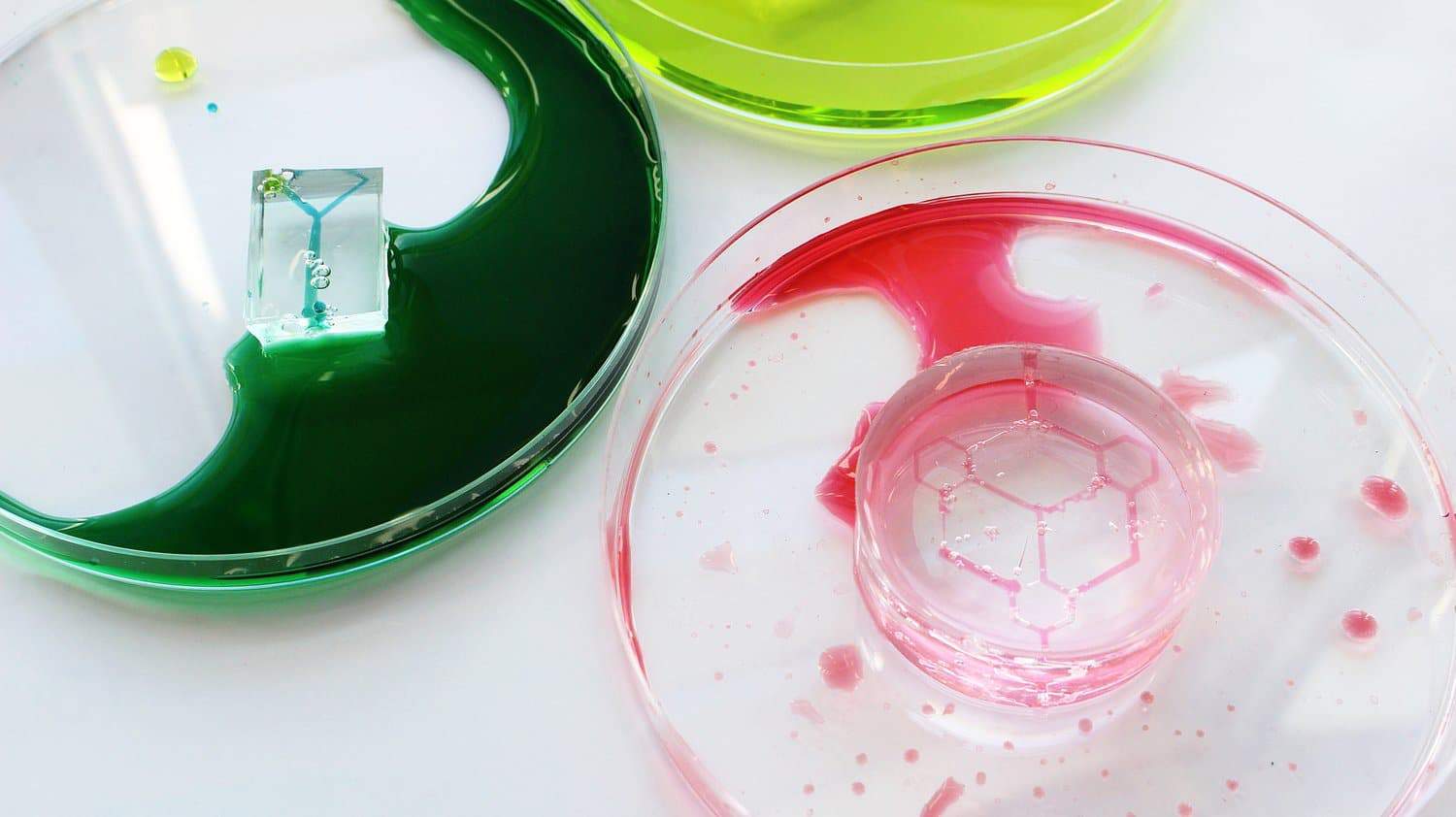
Allevi Blog
Our Top 5 Bioprinting Techniques
- Updated on October 21, 2020
When it comes down to it, a 3D bioprinter is really a powerful design tool – empowering scientists to combine biology with 3D geometry. In the years since we created the first desktop bioprinter, our community has amazed us with the innovative techniques they have developed to #buildwithlife.
There are several different bioprinting methods that can be used to pattern biomaterials with cells to create 3D tissue models. The most popular methods include 2D and 3D, inkjet-, laser-, or extrusion-based bioprinting. Allevi bioprinters are 3D extrusion-based printers that deposit bioinks in a layer-by-layer fashion from a syringe using compressed air. But even within this one category, there are plenty of different bioprinting techniques and approaches. Here, we present the most powerful ones that can help you create sophisticated and biomedically relevant tissue constructs.

Sacrificial Bioprinting
In principle, sacrificial bioprinting is a method in which you deposit a temporary, support material alongside your target cell-laden biomaterial. After the print is completed, the target bioink is crosslinked which makes it more structurally sound, and the sacrificial material is removed. This way you are able to support a complex 3D geometry during the printing process or even create negative space inside of the structure.
One of the most common materials used as sacrificial support is Pluronic 127. This synthetic copolymer forms a gel at room temperature. However, when cooled to 4° C, it liquefies and can be washed away. Another option, carbohydrate glass, is a special material that prints at 120° C and dissolves with isopropanol. By applying sacrificial bioprinting in your design you can create vasculature-like networks, perfusable systems, and even prototype chips for lab-on-a-chip applications. This is a quick and efficient alternative to more complex methods such as lithography.
Direct Casting
Sacrificial bioprinting can be also combined with another technique described here – direct casting. Instead of 3D printing the final construct itself, you can use Pluronic or Carbohydrate Glass to create molds that will serve as a template for casting another material. The casting itself can also be performed with your Allevi bioprinter. Instead of manually pipetting the target bioink, your bioprinter can quickly and precisely deposit inside the mold. Once the biomaterial is cured, you can safely remove the support material. This can save you time in the lab by making the whole process of casting more automatic.
FRESH
Freeform Reversible Embedding of Suspended Hydrogels (FRESH) is a powerful technique for 3D bioprinting soft tissues with complex geometries. If your ink has low viscosity or crosslinks slowly – FRESH is a perfect solution. This approach uses a support bath composed of gelatin microparticles, which behave as a solid-like liquid. This means that when the needle is immersed in this mixture it can freely travel through the particles, however, when a bioink is extruded into the support bath, the bath holds the bioink together providing some extra stabilization.
This will let you print more complex shapes including hollow 3D models, overhangs, and bridges, that wouldn’t be possible using standard extrusion methods. By including a crosslinker inside of your support bath, you can also induce polymerization of the bioink structure. When your structure is complete, you heat the gelatin to 37° C which dissolves the gelatin only- leaving only your construct intact. FRESH is also a cell-friendly technique, so you won’t have to worry about any reduced viability of your cells.
Multimaterial Bioprinting
Sometimes one material is just not enough. To replicate the complexity of native tissue, sometimes more cell types or bioinks are necessary. This is when multiple extruders come in handy. Allevi 2 and Allevi 3 bioprinters have multiple print heads that enable the printing of several materials in one session. The Allevi Bioprint Software allows you to individually control of the printing parameters independently of each other. You will be able to combine soft and hard materials, different pressures, or printing speeds. The Allevi 3‘s auto-calibration feature helps achieve the correct configuration of multiple materials printed in the same model. This opens countless possibilities – from printing thermoplastic support or casing, combining multiple cell compartments in the same construct, creating gradients of cells or biomolecules, to incorporating conductive materials to your next advanced tissue model.
Coaxial
Another way to take advantage of having multiple extruders on your Allevi bioprinter is to use a coaxial kit. This allows you to harness the power of the laminar flow of fluids. With a specially designed nozzle, you can extrude two or three materials through the same needle. This way, you can form different patterns in the extruded strand of the material. For example, one material can create a shell flow, while the other will form a core. Thanks to this bioprinting technique, it’s possible to print strands consisting of two or more materials or extrude low viscosity materials concurrent with their crosslinker – for example, sodium alginate and calcium chloride. What is more, you can use the sacrificial material technique discussed above by assigning a sacrificial ink as the core of the strand. This core, once removed, forms a negative space such as a perfusable channel.
The above techniques are some of our community’s most tried-and-true methods for 3D bioprinting and they form the basis for some of the most popular bioprinting publications. Mastering one technique or combining several in one construct will let you create more complex and accurate 3D models of tissues and organs. Are you interested in getting started with one of these bioprinting techniques in your lab? We have protocols to help you master these methods- visit our protocols page to learn more.

